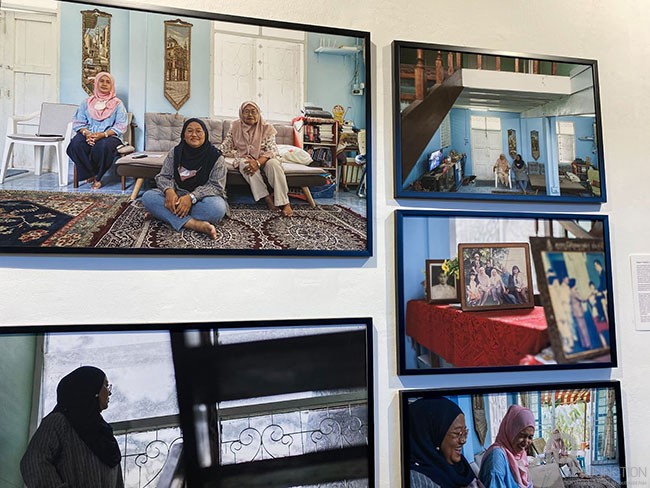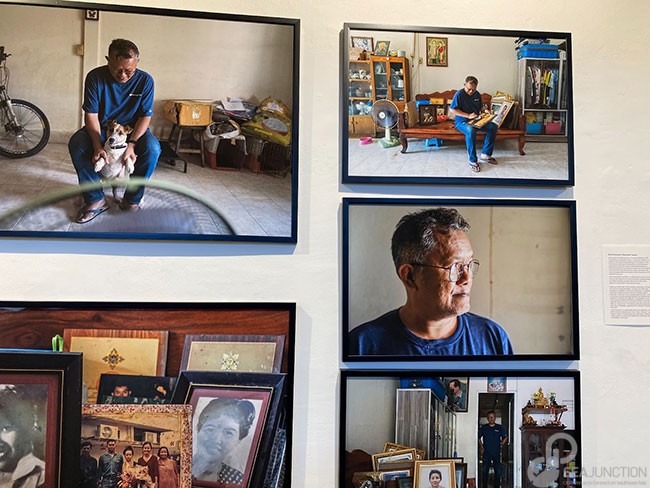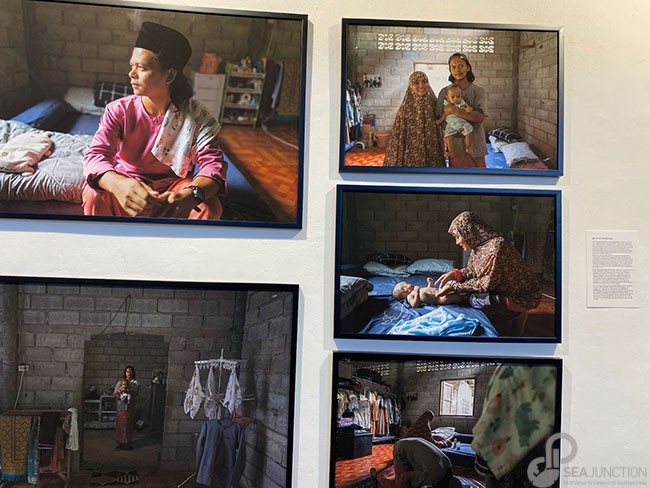
Yostorn with youth at the training session, photo by Realframe.
Thailand has experienced conflict in its Deep South over recent decades. The Deep South includes the provinces of Yala, Pattani, and Narathiwat, as well as four districts of Songkhla province. Muslims make up 76% of the region, with Buddhists comprising around 23%, and Christians and other religious groups making up smaller percentages of the population. Most Thai Muslims are ethnically Malay.
Some Muslim separatist groups are active in the region, most notably the Barisan Revolusi Nasional (BRN). Violence related to the separatist conflict and politics caused 3,686 deaths and 10,872 injuries between January 2004 and March 2022. When counting deaths from other crimes and resource conflicts in the region, the numbers stand at 7,344 deaths, and 13,641 injuries.
In August, photographer Yostorn Triyos led a training session for youth in the region to do photography about peace. The training, sponsored by Minority Rights Group International, allowed youth ages 18 to 30 to submit their photography portfolios, before participating in a four-day camp. This is the second year Yostorn has led the camp, where youth are instructed to take photos telling stories about their communities.
Yostorn said, “There is a theme of peace, but these trainees are new to this. So their interpretation is very wide in scope in terms of what it means for them regarding peace.”
The topics of the the youth’s photography include a range of societal issues and challenges in their communities. Some have taken photos about the heavy presence of military checkpoints in their communities, particularly when compared to other areas. Others have taken photos showing how women play a role in their communities, even though the communities are very male-dominated. Yostorn said that many of the youth also have their own platforms and fan pages, and therefore “can also play a role in social movements.” For example, one youth, Yostorn said, has focused on their work helping disabled people in the region.
“So they don’t just come and learn skills to take pictures, but also how to make photos look interesting and tell an interesting story,” he said.
While both Muslims and Buddhists attended the camp last year, this year, the 12 youth who participated were all Muslims. However, Yostorn said that in all the projects he has done, there have never been issues between the two groups. He said the two groups live together, and understand each other’s way of life.
From September 19 to October 1, Yostorn had an exhibition displayed at the Bangkok Art and Culture Centre titled “The Deep Places in the Deep South.” The photos in the exhibition captured residents of the Deep South during their day-to-day activities. Yostorn took these photos to challenge stereotypes that many Thais have about the Deep South. People often think of the region as filled with terrorists, thieves, and people causing chaos, he said. He added that the key message of his exhibition was to erase these stereotypes and. and to remind the public that people in the Deep South are fathers, mothers, and teachers.
“Because the understanding of the people in the society is such that people cannot live together because of their differences, because of different religions. But I want to portray and help people be able to relate to the human side of this.”
The subjects of Yostorn’s photos included a woman named Tua who works for a civil society organization called Duayjai. The organisation provides counseling and peace education to detainees and their families, and also provides support to survivors of torture. Yostorn’s photos of Tua show her smiling while sitting with her family. Yostorn wrote in the photos’ caption that his friendly conversation with them appeared to involve clashes between the different generations.

Realframe’s photos of Tua, photo by Tara Abhasakun.
One subject in the exhibition was a Buddhist peace leader known as ‘Uncle Kook.’ He is respected by both Muslims and Buddhists in his community, and ensures that the two groups live in harmony together. The photos of Uncle Kook show him with his beloved dog, and photos of his family.

Realframe’s photos of ‘Uncle Kook,’ photo by Tara Abhasakun.
In the exhibition, Yostorn aimed to highlight three special laws in the Deep South, which he believes have caused the conflict to continue for the past 19 years. Yostorn said these laws: the Martial Law, the Internal Security Act, and the Emergency Decree, give authorities the power to violate human rights.
“People get arrested without bail. As long as the time the court takes to judge whether they’re in the right or wrong, they don’t get bail,” he said. “So some people who are innocent might get locked in jail for a year or 10 months. And at the end of it, the court decides they’re innocent.”
Another subject in the exhibition was a man named Mulid, who was imprisoned for eight months after being labeled as an “insurgent.” The court eventually dropped the charges. Yostorn’s photos show Mulid with his wife and their baby.

Realframe’s photos of Mulid, photo by Tara Abhasakun.
Yostorn noted that the government has made people “desperate,” since when they try to fight for their rights using the law, they are fighting “an unjust system.” He said that this is why people turn toward groups like the BRN.
When asked if he believed that art could fight stereotypes in a way that political discussions cannot, Yostorn said, “Yes, definitely, otherwise I would not be doing this. I think that if I choose the right topic, then it can reduce stereotypes. And it will speak to people with various opinions.”
Yostorn said that most people who have discussed his exhibition with him say that it allowed them to see the other side of people living in the Deep South. They say they have seen the side of the region different from the violence shown in the news. Yostorn added that his photos, together with the captions, made people understand the reality of the area, and see more of the humanity of the people living in it.
Source : https://peacenews.com/can-photography-build-peace-the-case-from-thailand/


